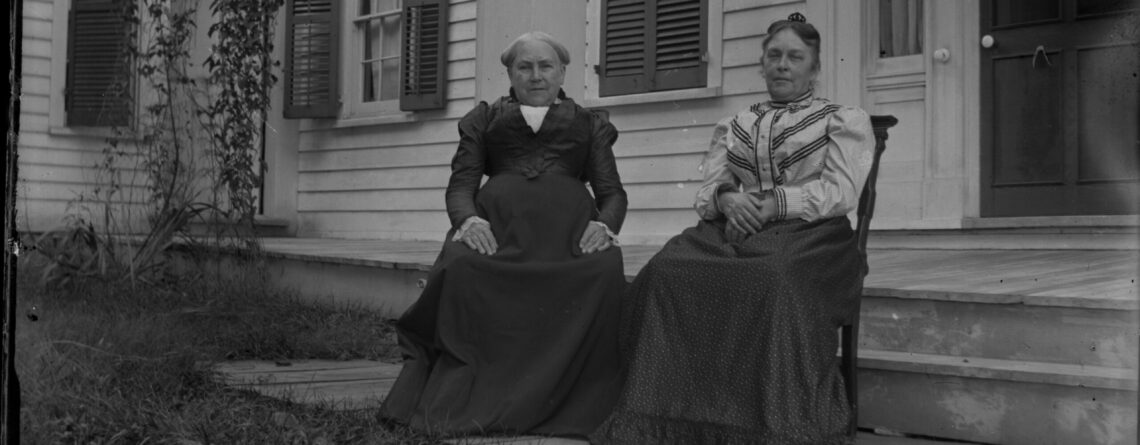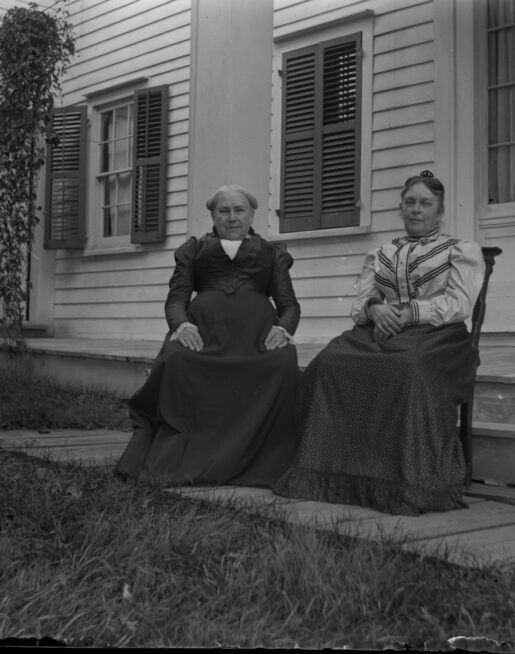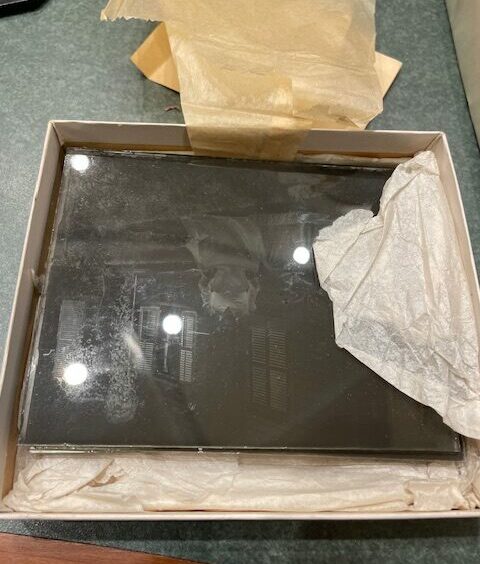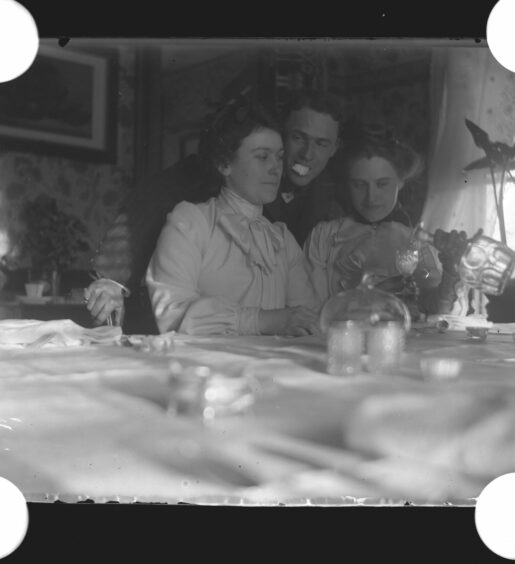Throwback Thursday, January 18, 2024: The Hudson Family Collection
Today we are highlighting this series of glass plate negatives from the Hudson Family collection and how our library is slowly bringing these images from the past back to life!
These photographs were taken over 120 years ago and provide us with a glimpse of what life was like in the early 1900s. We believe they were taken by a member of the Wright family since a note that came with them states these photos were of “Grandma Wright who was blind and Aunt Phebe Wright [,] the others I do not know”. The individual identified as “Grandma Wright” is actually Hannah Young Wright (1819-1905), who had several children with her husband Townsend Wright (1809-1875), including Phebe Wright (1842-1922). Phebe moved to Washingtonville to live with her sister Grace Alma Wright Hudson (1864-1950), and her brother-in-law William J. Hudson (1862-1946) around 1915. Both Phebe and her mother are buried with their other family members in Warwick Cemetery, Orange County, New York.
These photographs were taken over 120 years ago and provide us with a glimpse of what life was like in the early 1900s. We believe they were taken by a member of the Wright family since a note that came with them states these photos were of “Grandma Wright who was blind and Aunt Phebe Wright [,] the others I do not know”. The individual identified as “Grandma Wright” is actually Hannah Young Wright (1819-1905), who had several children with her husband Townsend Wright (1809-1875), including Phebe Wright (1842-1922). Phebe moved to Washingtonville to live with her sister Grace Alma Wright Hudson (1864-1950), and her brother-in-law William J. Hudson (1862-1946) around 1915. Both Phebe and her mother are buried with their other family members in Warwick Cemetery, Orange County, New York.
The plates in our collection were developed using a method known as “dry plate”, which replaced the wet collodion process around 1871. These plates were coated with a gelatin emulsion of silver bromide, meaning the plates could be stored in advance to be developed in a dark room later rather than immediately after the photograph was taken. Because of this, photography became more common outside of the studio, and families, like the Hudsons, could record events and photograph loved ones without having to apply hazardous chemicals, such as ether, to plates before the image was to taken.
Because of the fragility of the plates, we will need to use technology to view these images as intended. Placing the plate on a buffer, such as pennies, prevents the glass from getting scratched on our scanner. After closing the lid, we scan the slide like we would a document or photograph, however because light passes through the rear of the slide, a positive image appears on the computer screen. Now that we have a digital copy of the photograph, we can print and upload copies to be shared with scholars and genealogists!
To learn more about our Local History Collection, visit our Local History guide at guides.rcls.org/was_loh, or contact us via e-mail at moffat@rcls.org or phone at (845) 496-5483 x 326!





